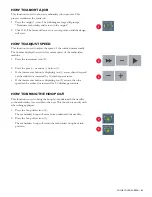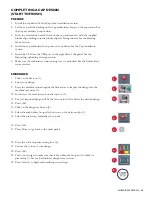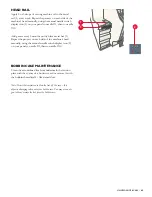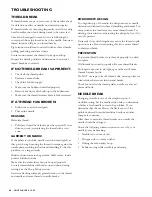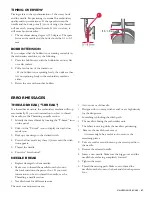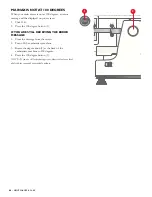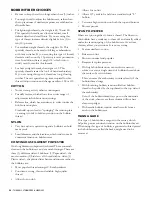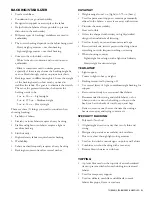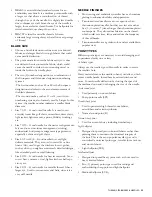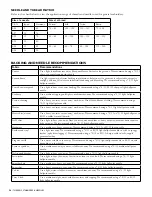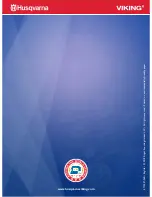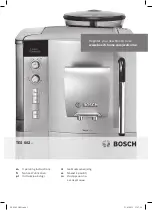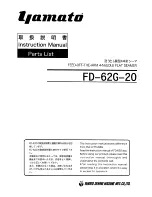
THREADS, STABILIZERS & NEEDLES –
51
BACKING/STABILIZER
• Used as stabilizer
• Foundation for a good embroidery
• Designed to support or even replace the fabric
• Helps hold the fabric as flat as possible to prevent
distortion in the embroidery
• Different types of backings/stabilizers are used in
embroidery
• The correct backing depends on the fabric being used
- Heavyweight garments – use thin backing
- Lightweight garments – use thick backing
• Comes in the color black or white
- White is the most common and is used on most
embroidery
- Black is sometimes used on darker garments,
especially if there is any chance the backing might be
seen or bleed through, such as on pique knit shirts
• Backing comes in different weights. Choose the weight
of the backing based on how much you need to
stabilize the fabric. The goal is to eliminate the stretch.
The more the garment stretches, the heavier the
backing needs to be.
- 1 oz. to 1.5 oz. – Lightweight
- 2 oz. to 2.75 oz. – Medium-weight
- 3 oz. to 3.5 oz. – Heavyweight
There are three (3) things you need to consider when
choosing backing:
1. Stability of fabric:
• Stretchy or loose fabrics require a heavy backing
• Stable and tight woven fabrics require a light or
medium backing
2. Stitch density:
• Higher density fabrics require heavier backing
3. Washability:
• Fabric washed frequently requires a heavy backing
• Backing becomes softer after several washes
CUT-AWAY
• Weights range from 1 oz. (light) to 3.75 oz. (heavy)
• Used for permanent support – remains permanently
affixed to the fabric – excess is cut away with scissors
• Provides the most stability
• Heat set fusible
• Offers the sharpest embroidery on highly detailed
designs that include small lettering
• Used on loosely woven and unconstructed caps
• Best used on knits, since it prevents the design from
stretching out with frequent washing or wearing
• When choosing cut-away:
- Lightweight for a design with a light stitch density
- Heavyweight for dense designs
TEAR-AWAY
• Light support
• Comes in light to heavy weights
• Backing is removed by tearing off
• Use several layers of light to mediumweight backing for
support
• Best used on firmly woven, natural-fiber fabrics
• Recommended for strong and stable fabrics, or for
when you do not want the backing to show on the
back, such as the backs of towels, caps, and bags
• Easier to remove one sheet at the time than using a
heavier tear-away and trying to remove it
SPECIALTY BACKING
• Poly mesh/No show
• A lightweight woven cut-away that is soft, thin and
strong
• Designed to provide extra stability on knit shirts
• Does not show through light color garments
• Used on low stitch count designs on polos and T-shirts
• Combine a no-show backing with a tear-away
• Removable with water or with heat
TOPPING
• A plastic film used on the top side of an embroidered
item to prevent stitches from shrinking into textured
fabrics
• Used for temporary support
• Used on delicate, mesh-like and difficult to mark
fabrics like pique, fleece or corduroy





